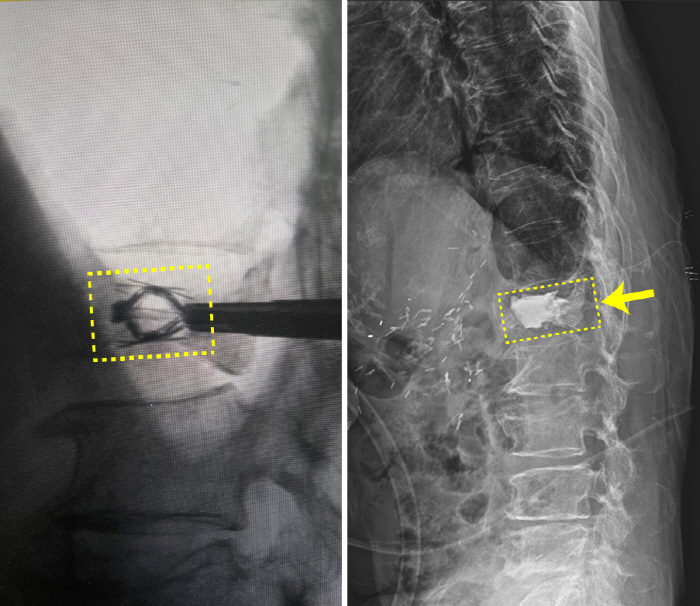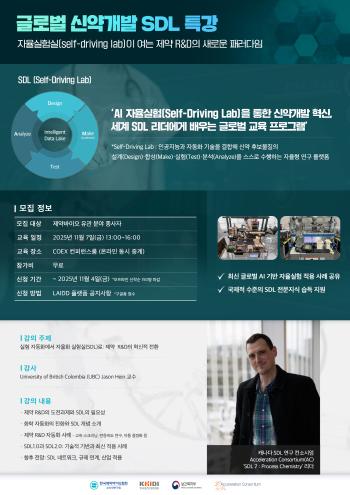Himchan Hospital Performs First Reinforcement Using Implants for the Treatment of Spinal Compression Fractures...expectation of effective treatment
Apr 30, 2025
Mokdong Himchan Hospital and the Sangwon Medical Foundation Incheon Himchan General Hospital have introduced percutaneous spinal compression fracture reinforcement (technical name announced by the Ministry of Health and Welfare; percutaneous spinal compression fracture reinforcement using vertically expanded titanium implants) for spinal compression fracture treatment, and the first procedure was successful.
On the 25th, a female patient in her early 70s who complained of back-bending due to spinal compression fractures and numbness in her legs underwent the procedure at the Spine Center of Incheon Himchan General Hospital.
Director of neurosurgery Kim Joong-ho, who conducted the procedure, said "This procedure is expected to be used effectively to restore the vertebral body and reinforce the fractured bones by raising and maintaining the height of the vertebral body."
The number of spinal fractures, which occurs mainly in the elderly, is increasing year by year, and the number of patients increased from 132,881 in 2018 to 157,788 in 2023. As the elderly population increases, it is analyzed that the number of patients with spinal fractures increases. In fact, as of 2023, there were 142,275 patients over the age of 60, accounting for 88.9% of the total, so the proportion of the elderly is very high.
Spinal compression fractures usually occur when a patient with severe osteoporosis falls, but if osteoporosis is very severe, it can occur without any impact. In addition, even without osteoporosis, it can also be caused by severe external force, such as falling from a high place.
Lee Dong-chan, director of the Neurosurgery Department at Mokdong Himchan Hospital, said "If the spinal compression fracture persists for a long time, the spine deforms, which causes the back to bend, which can even deteriorate lung function."It is important to closely grasp the degree and condition of the compression fracture through accurate diagnosis and to select the appropriate treatment accordingly."
◇If the pain is severe even with conservative treatment, consider the procedure
If the fracture is not severe, wear an assistive device or take a short-term bed rest, but if the vertebrae do not heal properly or continue to suffer from severe pain after two weeks of conservative treatment, spinal plastic surgery should be considered.
In addition, if more than 40% of the front column of the vertebrae is compressed, or if there are severe compression fractures in two or three consecutive vertebrae, procedures are needed to restore the compression deformation of the vertebral body to prevent the spine from bending forward. In particular, for the elderly, if they stay in bed for a long time due to compression fractures, the risk of complications such as pressure ulcers, pneumonia, and urinary tract infections increases.
Balloon spinal plastic surgery has been mainly performed for severe spinal compression fractures. A catheter with a special balloon attached to the fractured vertebral body is inserted to inflate the balloon to restore the vertebral body to its original state, and then bone cement is injected into the space. However, in the process of inflating the balloon, there were also limitations such as further inflating the resistance to the weaker side.
"Percutaneous spinal compression fracture reinforcement using implants is a method of inserting a vertical-axis extended titanium implant into the vertebral body, lifting the compression fracture body, and injecting bone cement, which is advantageous for restoring the collapsed vertebral body to a more accurate height as the surgeon can control the insertion position and expansion of the implant," said Kim Joong-ho, head of the neurosurgery department at Incheon Himchan General Hospital.
◇Help restore vertebral height and tend to reduce fractures in adjacent areas
Overseas studies have shown that percutaneous spinal compression fracture reinforcement using spin jack implants showed statistically significant differences in vertebral height restoration. In particular, new fractures may occur in the upper and lower vertebrae adjacent to the treatment site after spinal compression fracture treatment, and the incidence of fractures in the vertebrae adjacent to the treatment site tended to decrease, and the tendency of cement leakage was also reported to be low.
Spinejack implants are used in major countries such as Europe, the United States, France, and Taiwan after CE certification in France in 2008 and FDA 510 (k) approval in the United States in 2018.
In Korea, the Ministry of Health and Welfare's evaluation grace period was announced as a new medical technology in February 2024. The new medical technology evaluation grace system is a medical technology that uses medical devices approved by the Ministry of Food and Drug Safety, and if certain requirements are met, the new medical technology evaluation can be suspended and used in clinical medical sites for two years.
On the 25th, a female patient in her early 70s who complained of back-bending due to spinal compression fractures and numbness in her legs underwent the procedure at the Spine Center of Incheon Himchan General Hospital.
Director of neurosurgery Kim Joong-ho, who conducted the procedure, said "This procedure is expected to be used effectively to restore the vertebral body and reinforce the fractured bones by raising and maintaining the height of the vertebral body."
The number of spinal fractures, which occurs mainly in the elderly, is increasing year by year, and the number of patients increased from 132,881 in 2018 to 157,788 in 2023. As the elderly population increases, it is analyzed that the number of patients with spinal fractures increases. In fact, as of 2023, there were 142,275 patients over the age of 60, accounting for 88.9% of the total, so the proportion of the elderly is very high.
Spinal compression fractures usually occur when a patient with severe osteoporosis falls, but if osteoporosis is very severe, it can occur without any impact. In addition, even without osteoporosis, it can also be caused by severe external force, such as falling from a high place.
Lee Dong-chan, director of the Neurosurgery Department at Mokdong Himchan Hospital, said "If the spinal compression fracture persists for a long time, the spine deforms, which causes the back to bend, which can even deteriorate lung function."It is important to closely grasp the degree and condition of the compression fracture through accurate diagnosis and to select the appropriate treatment accordingly."
◇If the pain is severe even with conservative treatment, consider the procedure
If the fracture is not severe, wear an assistive device or take a short-term bed rest, but if the vertebrae do not heal properly or continue to suffer from severe pain after two weeks of conservative treatment, spinal plastic surgery should be considered.
In addition, if more than 40% of the front column of the vertebrae is compressed, or if there are severe compression fractures in two or three consecutive vertebrae, procedures are needed to restore the compression deformation of the vertebral body to prevent the spine from bending forward. In particular, for the elderly, if they stay in bed for a long time due to compression fractures, the risk of complications such as pressure ulcers, pneumonia, and urinary tract infections increases.
Balloon spinal plastic surgery has been mainly performed for severe spinal compression fractures. A catheter with a special balloon attached to the fractured vertebral body is inserted to inflate the balloon to restore the vertebral body to its original state, and then bone cement is injected into the space. However, in the process of inflating the balloon, there were also limitations such as further inflating the resistance to the weaker side.
"Percutaneous spinal compression fracture reinforcement using implants is a method of inserting a vertical-axis extended titanium implant into the vertebral body, lifting the compression fracture body, and injecting bone cement, which is advantageous for restoring the collapsed vertebral body to a more accurate height as the surgeon can control the insertion position and expansion of the implant," said Kim Joong-ho, head of the neurosurgery department at Incheon Himchan General Hospital.
◇Help restore vertebral height and tend to reduce fractures in adjacent areas
Overseas studies have shown that percutaneous spinal compression fracture reinforcement using spin jack implants showed statistically significant differences in vertebral height restoration. In particular, new fractures may occur in the upper and lower vertebrae adjacent to the treatment site after spinal compression fracture treatment, and the incidence of fractures in the vertebrae adjacent to the treatment site tended to decrease, and the tendency of cement leakage was also reported to be low.
Spinejack implants are used in major countries such as Europe, the United States, France, and Taiwan after CE certification in France in 2008 and FDA 510 (k) approval in the United States in 2018.
In Korea, the Ministry of Health and Welfare's evaluation grace period was announced as a new medical technology in February 2024. The new medical technology evaluation grace system is a medical technology that uses medical devices approved by the Ministry of Food and Drug Safety, and if certain requirements are met, the new medical technology evaluation can be suspended and used in clinical medical sites for two years.
|
This article was translated by Naver AI translator.














